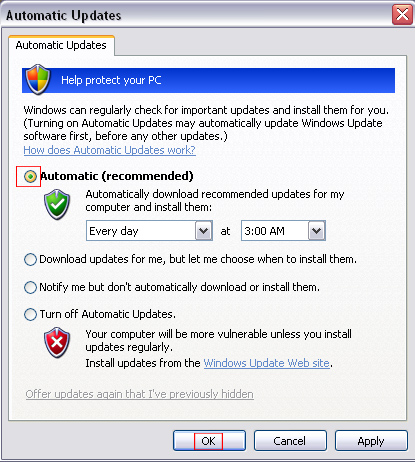If you know why you should run a Windows Update, then skip all the benefits and go straight to Steps to Run a Windows Update.
What is Windows Update?
Running a Windows Update is essential for keeping your current windows version up-to-date by installing patches and updates to protect your system from security vulnerabilities and in good working condition.
Just like a car that you change the oil in every 3000 miles or 3 months - whichever comes first, you must perform routine maintenance of your Windows Operating System or you run the risk of damaging or loosing your valuable data. I could go into detail about the benefits and consequences of maintaining vs. neglecting a car and simply put if you never change the oil for 15,000 miles something's going to happen and I am pretty sure you can agree with me when I say that the "something" is not going to be good.
With the Windows operating system, we all know, that Microsoft put out such a flawless software package found in millions of homes, offices, and industries throughout the world… well… lets take out the "flawless" part because its not true. It must be obvious to those of us who do use and run Windows Updates often that all Windows versions are somewhat flawed and could use a tune-up every once in a while. We know this simply by the number of regular patches and updates that are available to each version of the Windows operating system family.
Windows Update has a few different types of updates available to windows users every so often but not all of the updates are created equal. Some updates called "Critical Updates" are classified as essential updates that must be performed immediately. Critical Updates usually include a patch released by Microsoft that fixes a security hole.
When a security hole is found it could potentially exploit and damage not only your own system but computers worldwide. Security Patches are normally included within any type of Critical Update. Update Rollups and Service Packs usually are large downloads for performing several updates at once within the Windows Operating System. Other types of Windows Updates such as specific software updates, hardware driver updates and Beta software updates are not as essential as a Critical Update or Security Patch Update. All available updates are recommended to be performed to rule out any potential issues or software/hardware conflicts down the road.
Steps to Run a Windows Update
To run a Windows Update follow the steps below.
- The first step to running a Windows Update is open Internet Explorer. Windows update will not work on other web browsers such as Firefox. Once you are in Internet Explorer selected the Tools menu and then select Windows Update. This will navigate you to the web address: windowsupdate.microsoft.com or www.update.microsoft.com.
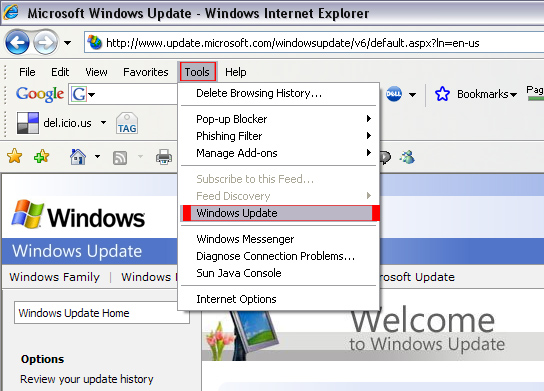
- Once you are there click Express Install (Recommended).
At this point it may give you the option to choose which updates to install, if not then skip ahead one step. Read the instructions carefully to install any patches that are required on screen and if needed go back and download and install any other patches.
- After selecting the items click on Go to install updates.
- Click the Download and Install Now button to initialize the download process of the updates.
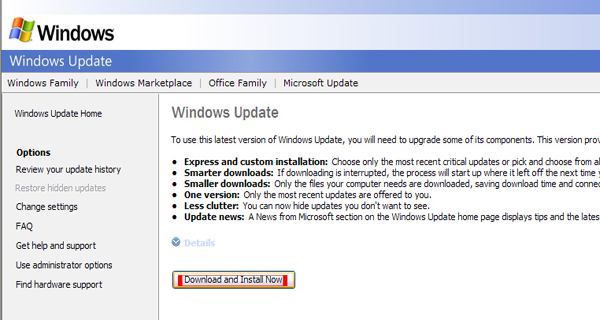
- The download process will start displaying a status indicator. This may take a few minutes depending on your internet connection.
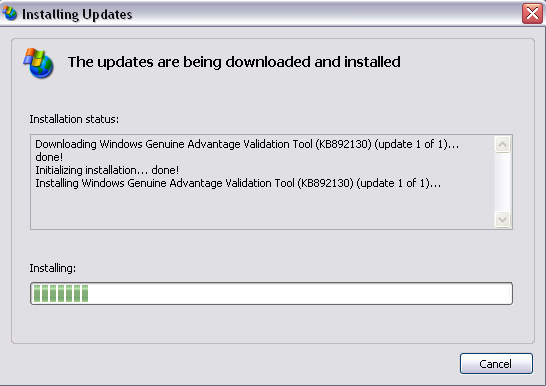
- Windows Update will automatically initialize the actual installation of each update. This may take a few minutes depending on your system.
Setup Windows Update to Run Automatically
To setup Windows Update to automatically run without you answering a prompt or disturbing you while you work, follow the instructions below.
Note: Instructions are for Microsoft Windows XP with Service Pack 2. Other versions of Windows will have similarities of the instructions explained but may vary.
- First go to the Start menu and select the Control Panel.
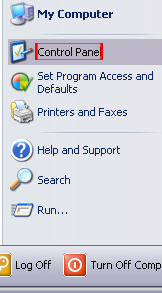
- Once the Control Panel is open select Security Center.
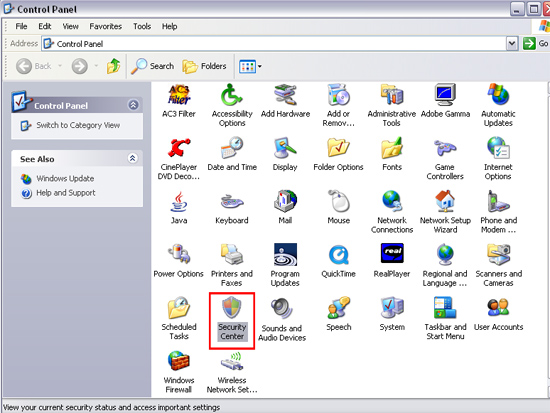
- You will now see an open Security Center window. If you see that there is a Green light and ON indicator next to the Automatic Updates label you do not need to proceed. You are already set up for automatic Windows Updates. If found otherwise with the label Automatic Updates without a Green ON label please proceed to click on the Automatic Updates label.
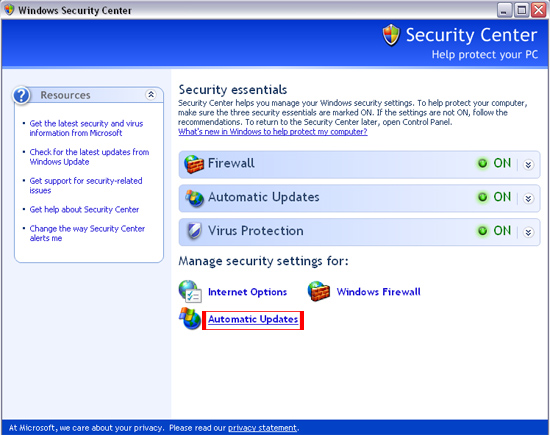
- The Automatic Updates window will appear and you must select Automotive (recommended) to turn on the Automatic Updates. At this time you may choose to adjust a pre-set time that you would like for your PC to check/perform Automatic Updates.
